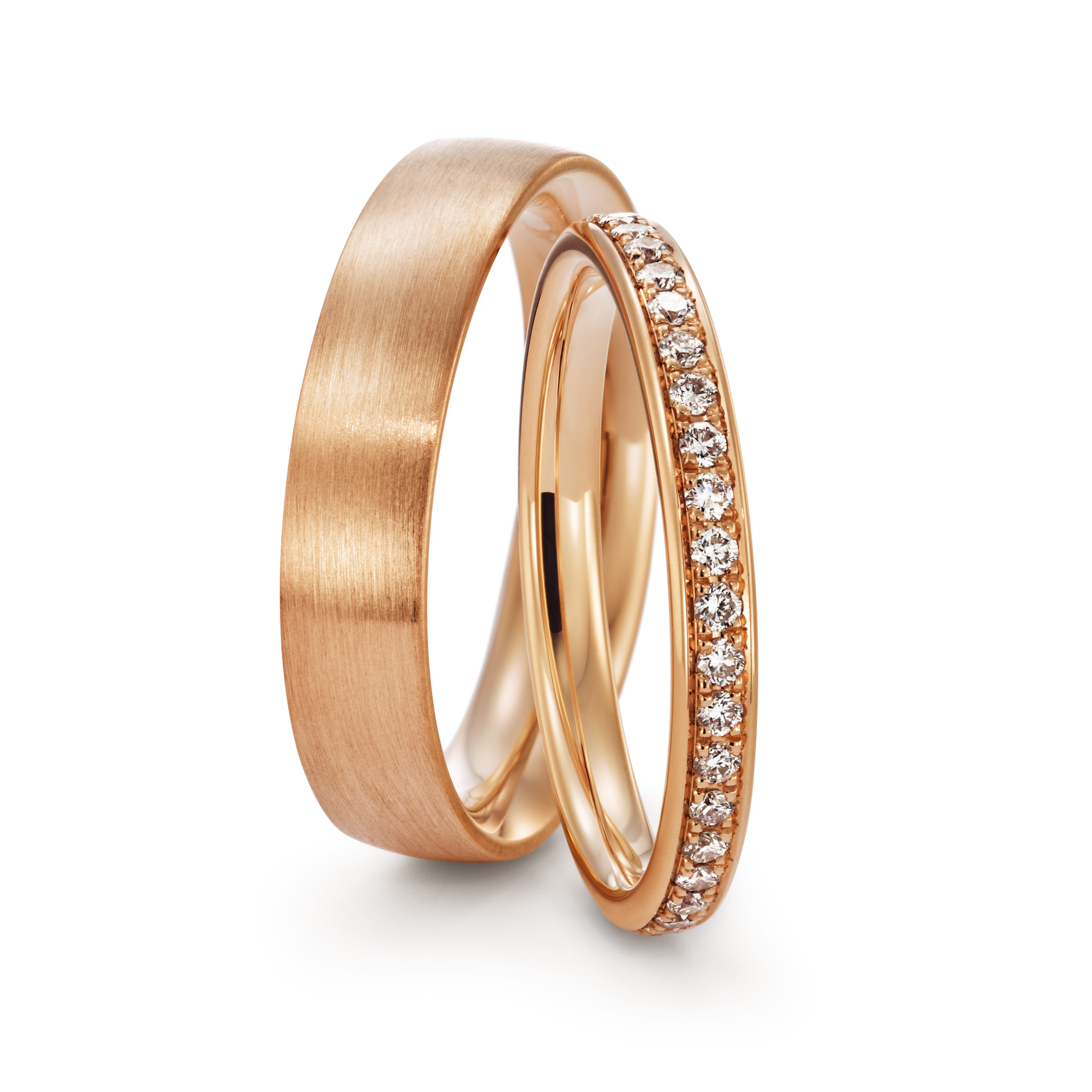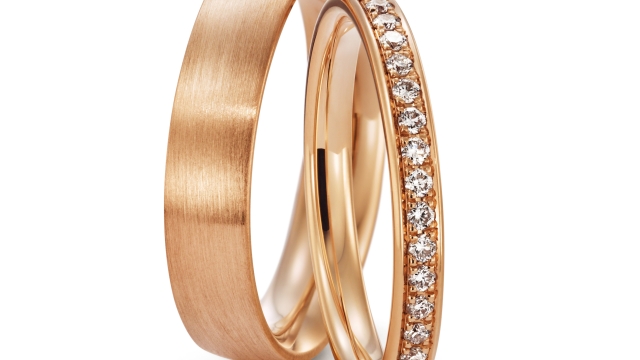
Wedding bands hold a unique allure that transcends time, symbolizing the eternal commitment between two souls. Beyond the glimmering gemstones and exquisite designs, these precious rings carry stories of love, devotion, and unity. With their timeless charm, wedding bands have woven themselves into the very fabric of our culture, standing as a testament to the unbreakable bond between spouses.
Every wedding band is a work of art, crafted with attention to detail and an understanding of the profound significance it holds. The circular shape of the band represents the unending journey of love, with no beginning or end, a perfect reflection of the eternal nature of marriage. Whether made of traditional metals like gold or platinum, or adorned with sparkling diamonds or other precious stones, wedding bands encapsulate the dreams, promises, and enduring memories of a couple’s shared lifetime.
As couples exchange their wedding bands, they embark on a lifelong adventure together, with the rings serving as a constant reminder of the vows they have made. These bands become cherished heirlooms, passed down through generations, carrying with them the love stories and legacies of those who came before. More than just a piece of jewelry, wedding bands encapsulate the essence of commitment, growth, and the steadfast promise of forever.
In this article, we will delve into the fascinating world of wedding bands, exploring their history, significance, and varied styles. From classic designs to modern interpretations, we will navigate the realm of wedding bands, shedding light on the exquisite craftsmanship and sentimental value they possess. Join us as we unveil the timeless charm of wedding bands and celebrate their role as the symphony of forever in the lives of countless couples.
Symbolism of Wedding Bands
Wedding bands have long been revered as powerful symbols of love and commitment. These timeless pieces of jewelry hold deep meaning and significance, representing the eternal bond between two individuals embarking on a lifelong journey together.
The circle, with its endless and unbroken shape, is the hallmark of a wedding band’s symbolism. It signifies the unending cycle of love and devotion shared between spouses. The absence of a beginning or an end in the circular form of a wedding band represents the everlasting nature of the commitment made on the day of matrimony.
In addition to the shape, the precious metals used to create wedding bands also hold symbolic significance. Traditional choices like gold, platinum, and silver not only exhibit their own inherent beauty but also embody qualities considered desirable in a marriage. Gold, for instance, symbolizes wealth, prosperity, and love. Platinum represents purity, strength, and endurance.
Furthermore, the act of wearing a wedding band on a specific finger, typically the fourth finger of the left hand, carries its own symbolisms. This finger, known as the "ring finger," is believed to have a direct connection to the heart through a vein known as the vena amoris, meaning "vein of love" in Latin. This tradition reinforces the notion that the love and commitment sealed by the wedding band flow directly from the heart.
In summary, wedding bands hold great symbolism, owing to their circular shape representing eternal love, choice of precious metals embodying marriage qualities, and the meaningful act of wearing them on the finger connected to the heart. These powerful symbols serve as a constant reminder of the unbreakable bond between two souls joined in matrimony.
Evolution of Wedding Band Styles
Wedding bands have witnessed a fascinating evolution throughout history. From humble beginnings to exquisite works of art, these timeless symbols of love have continually embraced new trends and styles.
Throughout antiquity, wedding bands were often made from natural materials such as wood, bone, or woven grasses. These simple yet meaningful bands represented the bond between two individuals and their commitment to one another. As civilizations advanced, metals like gold and silver became more readily available, transforming wedding bands into symbols of wealth and prosperity. Intricate engravings and embellishments began to adorn these rings, adding a touch of elegance and personalization.
As the world entered the modern era, wedding band styles became even more diverse and reflective of individual tastes. The Art Deco movement of the 1920s brought about rings with geometric shapes and bold designs, reflecting the exuberance of the time. The sleek and minimalist aesthetics of the mid-20th century introduced simple bands that emphasized the beauty of the metal itself, with clean lines and smooth surfaces.
Today, wedding band styles encompass a wide range of options to suit every preference. From classic and traditional rings with timeless designs to contemporary bands that push the boundaries of creativity, couples now have more choices than ever before. Customization has become increasingly popular, allowing individuals to incorporate personal symbols, birthstones, or even fingerprints into their wedding bands, creating unique and sentimental pieces.
The evolution of wedding band styles demonstrates the everlasting nature of love and the ability of these small, circular treasures to adapt to changing times. With each passing era, wedding bands have symbolized commitment, unity, and eternal love, serving as physical reminders of the promises made between two souls.
Choosing the Perfect Wedding Band
When it comes to choosing the perfect wedding band, there are several important factors to consider. First and foremost, think about your personal style and the overall aesthetic you want to achieve. Whether you prefer a traditional and timeless look or a more modern and unique design, finding a wedding band that aligns with your personal taste is crucial.
Another key consideration is the metal type. Wedding bands are available in a variety of metals, each with its own unique characteristics. From classic gold and platinum to contemporary choices like titanium and tungsten, the metal you choose can greatly affect the overall appearance and durability of your wedding band.
In addition to style and metal type, it is important to consider the practical aspects of your wedding band. Think about your daily activities and lifestyle. If you lead an active lifestyle or work with your hands, you may want to choose a wedding band that is durable and resistant to scratches. On the other hand, if you prefer a more delicate and intricate design, you might prioritize beauty over durability.
Ultimately, the perfect wedding band is the one that not only complements your engagement ring but also reflects your unique love story. Take your time, explore different options, and don’t be afraid to seek advice from jewelry professionals to ensure you find the wedding band that perfectly symbolizes your everlasting commitment.
